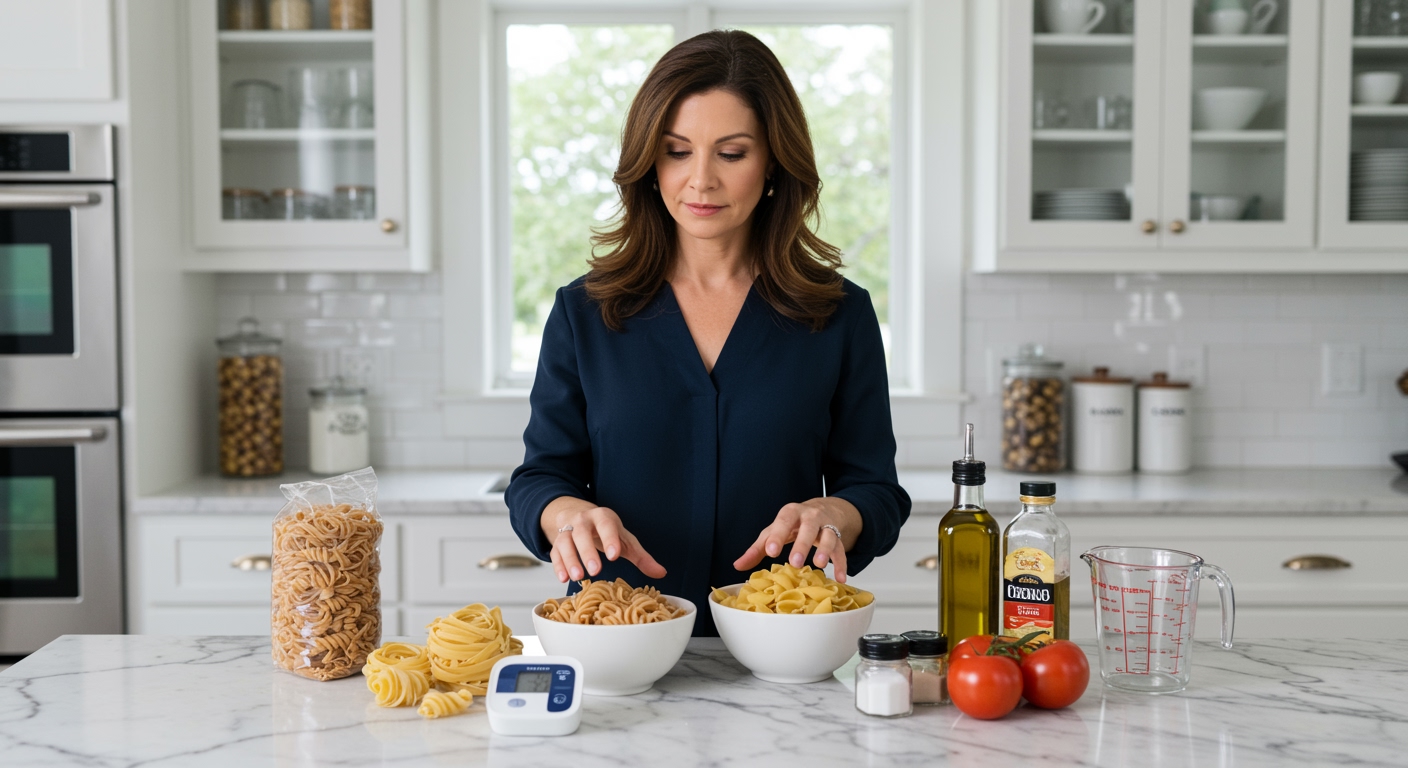✪ Key Takeaway: Hypertensive patients can eat pasta in moderation, choosing whole grain varieties and controlling portion sizes.
Introduction
Your doctor just told you that your blood pressure is too high and you need to watch your diet.
Now you are staring at your favorite pasta dish wondering if those comforting carbs will send your numbers through the roof.
Hi, I am Abdur, your nutrition coach and today I am going to explain exactly how pasta affects your blood pressure and what smart choices you can make.
How Does Pasta Actually Affect Blood Pressure?
The relationship between pasta and blood pressure is not as simple as good or bad.
When you eat refined pasta, your body breaks down those simple carbohydrates quickly into glucose.
This rapid glucose spike triggers your pancreas to release insulin, which can cause your blood vessels to retain more sodium and water.
More fluid in your blood vessels means higher pressure against your artery walls.
However, whole grain pasta behaves differently in your body because it contains fiber that slows down digestion.
This slower release of glucose helps maintain more stable blood sugar levels and reduces the insulin response that can worsen hypertension.
✪ Fact: Whole grain pasta contains three times more fiber than regular white pasta.
What Type of Pasta Should You Choose?
Not all pasta is created equal when you have high blood pressure.
Whole wheat pasta should be your first choice because it provides fiber, B vitamins, and minerals that support heart health.
The fiber in whole grains helps your body eliminate excess sodium through your kidneys, which directly helps lower blood pressure.
Legume-based pasta made from lentils, chickpeas, or black beans offers even more benefits.
These alternatives provide plant protein and potassium, a mineral that counteracts sodium effects on blood pressure.
Regular white pasta made from refined flour lacks these protective nutrients and can cause more dramatic blood sugar swings.
If you must choose white pasta occasionally, pair it with plenty of vegetables and lean protein to slow down the glycemic response.
✪ Pro Tip: Cook pasta al dente to lower its glycemic index and reduce blood sugar spikes.
How Much Pasta Can You Safely Eat?
Portion control becomes critical when you have high blood pressure.
A proper serving of pasta is one cup cooked, which equals about half a cup of dry pasta.
Most restaurant portions serve three to four times this amount, which can overwhelm your body with carbohydrates.
Eating oversized portions triggers larger insulin releases and can cause your kidneys to retain more sodium and fluid.
You can enjoy pasta two to three times per week if you stick to proper portions and choose whole grain varieties.
Fill half your plate with vegetables, one quarter with pasta, and one quarter with lean protein for optimal blood pressure management.
This balance helps slow carbohydrate absorption and provides nutrients that support healthy blood pressure.
✪ Note: Use your fist as a guide for proper pasta portion size at meals.
What About Pasta Sauces and Seasonings?
The sauce you choose can make or break your blood pressure friendly pasta meal.
Most commercial pasta sauces contain hidden sodium that can quickly push your daily intake over healthy limits.
Just two tablespoons of regular marinara sauce can contain 300-400 milligrams of sodium.
Cream-based sauces add saturated fat that can worsen cardiovascular health over time.
Your best options include fresh tomato sauce made at home with herbs, garlic, and olive oil.
Olive oil provides healthy fats that support blood vessel function, while garlic contains compounds that may help lower blood pressure naturally.
Always check sauce labels and choose products with less than 140 milligrams of sodium per serving, or better yet, make your own low-sodium versions at home.
✪ Pro Tip: Add fresh herbs like basil and oregano for flavor without extra sodium.
The Bottom Line
You do not need to eliminate pasta completely from your diet when managing high blood pressure.
Smart food choices are about balance, not elimination and pasta can fit into a heart-healthy eating plan when you make informed decisions.
I would love to hear about your experience with managing pasta intake for blood pressure control, so please share your questions or thoughts in the comments below.
References
At NutritionCrown, we use quality and credible sources to ensure our content is accurate and trustworthy. Below are the sources referenced in creating this article:





